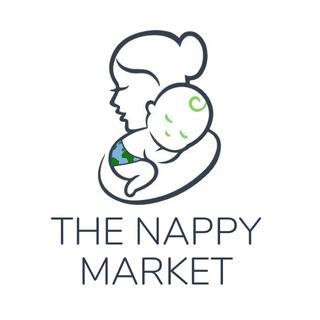How to use my Cloth Nappy Starter Kit
Welcome to your cloth nappy starter kit - congratulations on taking a step your baby, your planet and your pocket will love!!
Below you will find a quick "How to Fit video" and a step by step guide on use and washing.
Step 1: Prewash - just like new baby clothes, prewash everything before first use. One standard wash, (no softener) will be fine.
The inserts will get slightly more absorbent and also shrink and thin slightly with several washes.
These nappies are Birth To Potty (also called One Size) they will fit from approximately 10-35 lbs, typically 1 month - 3 years old.
Step 2: Using your Nappies
Put the two absorbent inserts into the cloth nappy pocket. Adjust the snap risers at the front of the nappy down from a smaller baby or fully open for a toddler.
Use a fleece liner or a disposable nappy liner* next to the babies skin, this makes removing solids easier, gives the baby an extra stay dry layer, prevents staining and also absorbs any excess nappy rash cream.
*Disposable liners are only required when you begin weaning your baby onto solids (See our full guide on using liners if you are unsure).

Fitting the Nappy
Close the nappy onto the baby, pull the nappy up through the middle (slightly higher at the front), squeeze the nappy through the middle (like your holding a burrito) ensure the elastics edge of the nappy sits in to the knicker line.
Close the hip snaps so there is enough room to fit two stacked fingers between the babies belly and the nappy - the snap closures don't always need so be symmetrical, its ok if they are off centre if that gives the best fit. The fit is more like structured denim jeans - leave some wiggle room at the waist for when the baby is seated.
Step 3: Washing and Storing your Nappies
At nappy change, remove any solids into the toilet from the liners (this only applies for babies who are on solids - typically 6 months old, if your baby is younger than this, the poop does not need to be removed first).
Put the entire nappy into your wet storage bag, basket or bucket. Allow good air circulation while storing your nappies, leave the zipper on the bag open, or store them with the lid off the bucket.
Every 2-3 days put all your stored used nappies into the washing machine and follow the wash routine:
1. Cold rinse wash first - no powder or softener. This step is to fully rinse out each nappy with cold water, this removes most of the urine and excess solids. You must ensure the water from this step is fully removed from the machine and not used again in the next step of the wash (do not choose "prewash" option for this reason). Choose rinse or cold short wash cycle - each machine is different but 20 - 30 mins cold wash is ideal.
2. Long Hot Cotton Wash - this is the main wash, we want to use a long hot cotton wash cycle on your already rinsed nappies to get them clean. Choose 60 degree wash for 2.5+ hours with biological washing powder*. Your nappies should come out of the wash clean and not smelling of anything (not urine and not washing powder).
*You may also use non bio washing powder but you will need to also add nappy sanitiser and always wash on 60 degrees.
3. Extra rinse wash - this is optional, not always necessary, If just ensure all excess washing powder is fully removed. If you live in hardwater area, avoid extra rinse.
4. Spin - this will help with drying process.
5. Hang to dry. Its useful to sort out the wet nappy laundry once the wash is complete into quick drying / slow drying items. Quick drying items like fleece liners, nappy shells and covers, and wipes can be layed into a sunny window to dry. Slower drying items can be hung on a clothes horse, into a hot press or onto the washing line to dry.
Some parts can be tumble dried on low heat to speed up drying if required - avoid putting PUL / TUP (coloured waterproof material) parts into the tumble dryer as this can damage the material over time.
Read more from our advice centre
